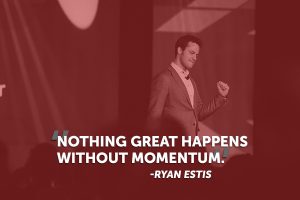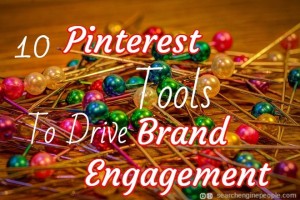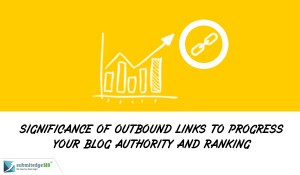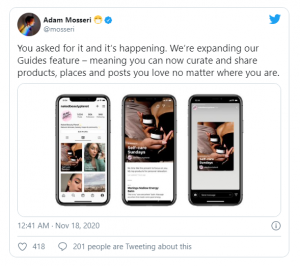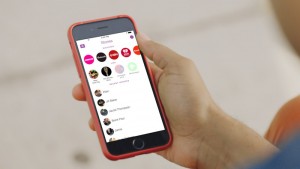Exos CEO Sarah Robb O’Hagan believes a four-day workweek will soon be the norm
The CEO of fitness and coaching firm Exos talks burnout and embracing failure on the latest episode of the ‘Rapid Response’ podcast.
As a slew of execs embrace the quest to stay as young and fit as possible, Equinox recently announced a $40k longevity training membership. The company’s former president, Sarah Robb O’Hagan, now CEO of fitness and coaching firm Exos, explains where this craze sparked, and where it’s likely headed. O’Hagan outlines what she calls a “pro-recovery culture” at work to avoid burnout, and why a four day work week may be inevitable.
This is an abridged transcript of an interview from Rapid Response, hosted by the former editor-in-chief of Fast Company Bob Safian. From the team behind the Masters of Scale podcast, Rapid Response features candid conversations with today’s top business leaders navigating real-time challenges. Subscribe to Rapid Response wherever you get your podcasts to ensure you never miss an episode.
Equinox gets in on the longevity training craze
There’s been a rising craze around the pursuit of human longevity. Before Exos, you worked at a number of places, including Nike, Gatorade, and Equinox—which you led for several years. And Equinox recently announced a $40,000 membership. The gym chain has always positioned itself as high end, but that’s pretty aggressive.
That’s exactly on-brand and perfect for them because the longevity movement is really taking off, particularly at the high end of the market where people can afford it. There is going to be people spending a lot of money in pursuit of being able to extend their ability to perform at their best for as long as they can. Even if a ton of people aren’t going to buy it, it’s still going to position Equinox in the market. People are talking about it.
Peter Attia’s book Outlive about the science of longevity became something of a phenomenon in business circles. But where is this craze emanating from?
On the far end of the scale, we have the Ozempic craze happening as a reaction to decades of the obesity situation, that we’ve suddenly woken up and realized we had to solve for. At the same time. you’ve got people realizing all those years that we were eating highly processed foods, not sleeping well, working hours impacting our brain health. And then you mentioned business circles, I think we both know high-end executives. How do they get there? They’re competitive people. And everyone’s out-playing each other on who’s got the latest tools and cold plunges. So I think that’s what’s fueling it.
There’s a 45-year-old former tech CEO, Bryan Johnson, who’s reportedly spending $2 million a year to try to reduce his biological age to 18. Has the science changed? Or is this just an aspiration?
I don’t know how much science has really been done to research all of the things that people are experimenting with. My biggest worry about this movement is it’s a very single player movement. It’s me doing all these things for me. And yet, the greatest thing that helps mental health is social dynamics. I worry that we’re losing sight of that a bit.
The evolution of Exos
Exos isn’t explicitly about longevity. How do you describe what Exos is doing now? It seems like you’re looking to develop the nexus between individual fitness, professional performance, and lifestyle?
Yeah, that’s it. We were founded by Mark Verstegen as a coaching company for pro athletes. We have coached over a thousand young men that went through the NFL Combine. And then halfway into our journey, we moved into the corporate health and wellness space because we realized that executives are wanting the exact same thing that the most elite athletes are doing. They’re all reading up about Patrick Mahomes. They’re going, “I want the best of the best”. Whether you’re coaching an athlete or executives, it comes down to—is your mind and your body working together to help you feel amazing? Are you doing all of the things right around sleep movement, nutrition, so that you can perform at your best?
But if your work environment doesn’t enable you to bring these high performance ways to life, then what does it matter? Look at how many hours we spend every day at work. And so what we’re doing is working with C-suites of Fortune 500 companies and saying, “How do we help you create cultural norms that help the entire team go to the higher level of performance?”
Tips to avoid the burnout epidemic
To some extent, you’re coaching CEOs about how to run their culture, but you’re also wanting to bring a different kind of coaching into the workplace.
Yes, exactly. If I was to say to a CEO, “You are not getting the most out of your team because you are running them into the ground,” they don’t want to hear it.

Build what we call “load and recovery” into your culture. During the week, heavy meeting days, putting the maximum load on the mind and body. Follow that with really intentional quiet work days, getting time for recovery. You can actually make an enormous improvement to how people are feeling. They can get into what’s called “flow state,” which means they can do thoughtful written work easier and get to high levels of productivity.
But it does start with the CEO and the C-suite, because if they don’t believe that, then the employee can do everything they can to try and live the right lifestyle, but they’re getting burned out by the culture of their company. I can’t tell you how many times I sit with C-suite executives and I say, “Okay, let’s start by looking at your calendar.” And they’ll show me their calendar—back-to-back meetings, all incorporating their team. And I’m like, “You’re the problem. It starts with you.”
It almost sounds like applying the idea of cross training to your work day?
Yes. We show them this experiment done by the Microsoft Human Factors Lab. And it shows images of a human brain on meetings.
So, it’s four meetings in a row, back-to-back-to-back, and you see the first brain scan, super healthy, happy brain. By this third meeting, it’s showing the same indicators of a brain with severe anxiety issues. That’s our brain on meetings. Then we show them the same scans of a brain where the person took 10 minutes, only 10 minutes between each meeting. That brain is healthy by the end. All we’re asking is 10 minutes just to give you and your team some space to actually let the brain recover.
Advocating for the four-day work week
You also talk about a four-day work. So talk to me about that. ‘Cause I struggle to get everything done in a five day work week.
I’m willing to go on the record and say: I truly believe 10 years from now, the four-day work week will be the standard. It’s the way the world is going.
We did this grand experiment for six months and worked with Adam Grant and the Wharton team. We restructured the way meetings work. So we call them Team Tuesdays and Thursdays—heavy, heavy meeting days. Mondays and Wednesdays were blocked quiet time or one-on-ones. And we had You Do You Fridays. If you get to Friday and you are so wiped out, you can take a day of recovery. If you feel like you want to do quiet work, you do quiet work.
We got to the end of the study and we were testing everything from levels of burnout to how productive the team feels. We found not only were we more productive, not only did the company have one of its best years of performance, but we took people from 70% experiencing feelings of burnout to 35%. And when you dig into the four-day work week piece, 70% of the team did choose to work on a Friday. And they enjoyed that work because the rule was you could not do meetings, you couldn’t text one another. It was a quiet day, but for most people they could use that day as they wanted.
Learning to embrace failure on social media
I wanted to ask you about your LinkedIn page. You’ve got some unusually candid descriptions. For your position as the Lead Marketer for Virgin Megastores, you say, “I was fired after one year for being too cocky, out of my depth and ineffective.” For your job as VP of Marketing at Atari, you say, “EPIC FAIL. Couldn’t grasp the product, the consumer, or the business.” You mention failures again at Nike, at Gatorade. . . . Why did you do this?
When I got fired from Virgin Megastores, I was given a one week severance and a plane ticket back to New Zealand. And when you go through something like that in your career, your first orientation is, “Oh my God, I’m interviewing for my next job. I have to make up a story as to why I haven’t worked for three months.” And I eventually realized if I just walked into the job interview and said, “This went really badly. And here’s what I’ve learned from it.” . . . That’s why I got my next job, because the person on the other side is like, “At least she’s honest. She’s authentic. And she’s learned from her mistakes.” So that was the personal reason why I decided to get a lot more comfortable with this discussion of failure.
Young people are constantly barraged on LinkedIn with, “Look at me and look at all the awards I’m getting.” And that really knocks someone’s confidence. If only more people at our stage in our careers could be more honest about embarrassing screw ups. It’s part of learning and becoming a good executive.
ABOUT THE AUTHOR
(21)


